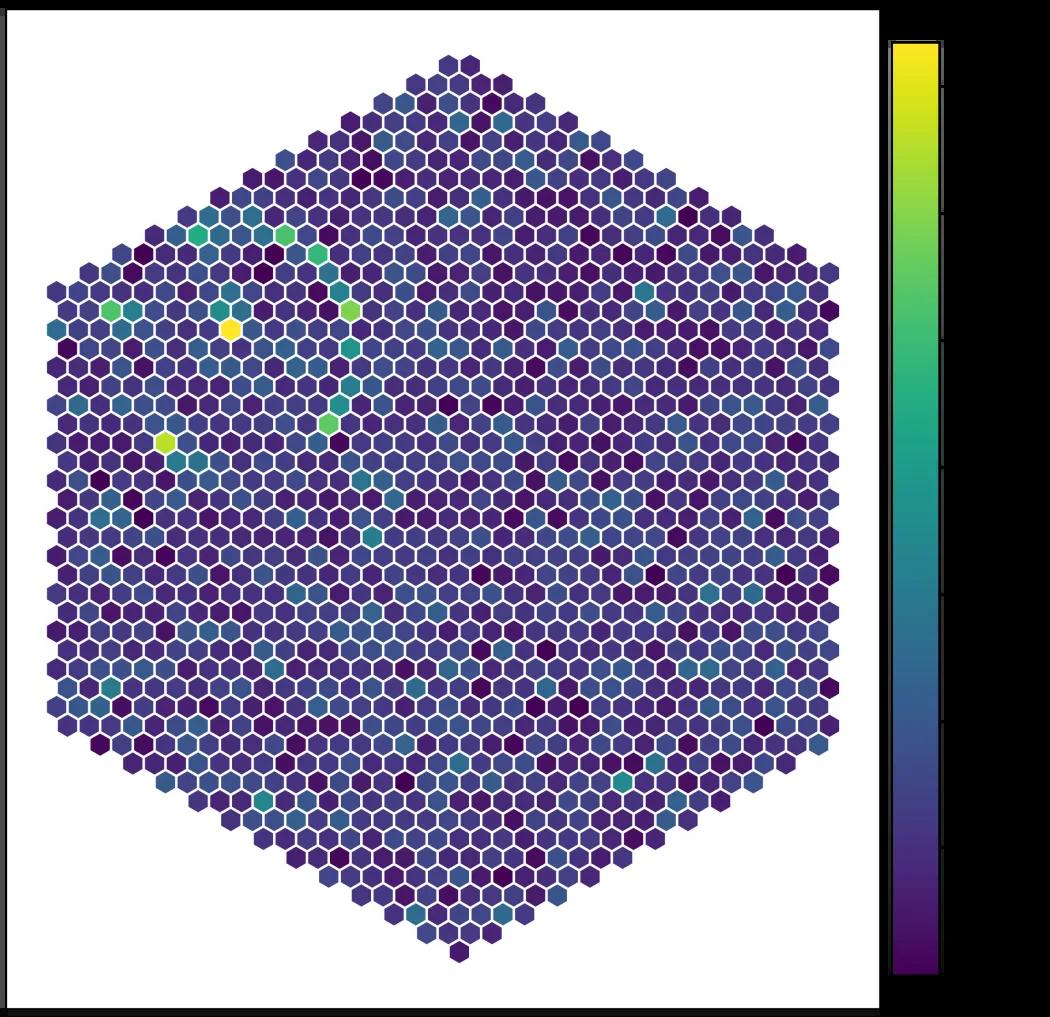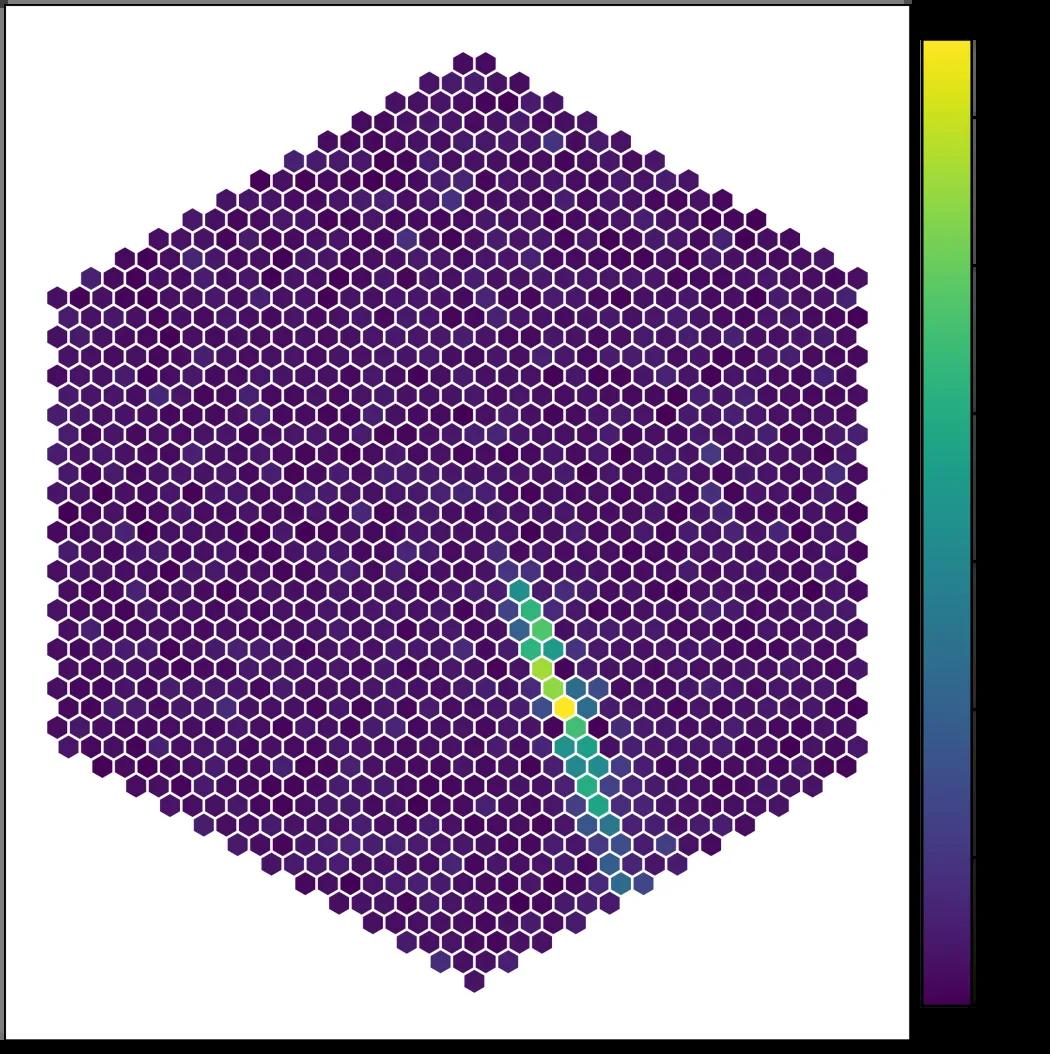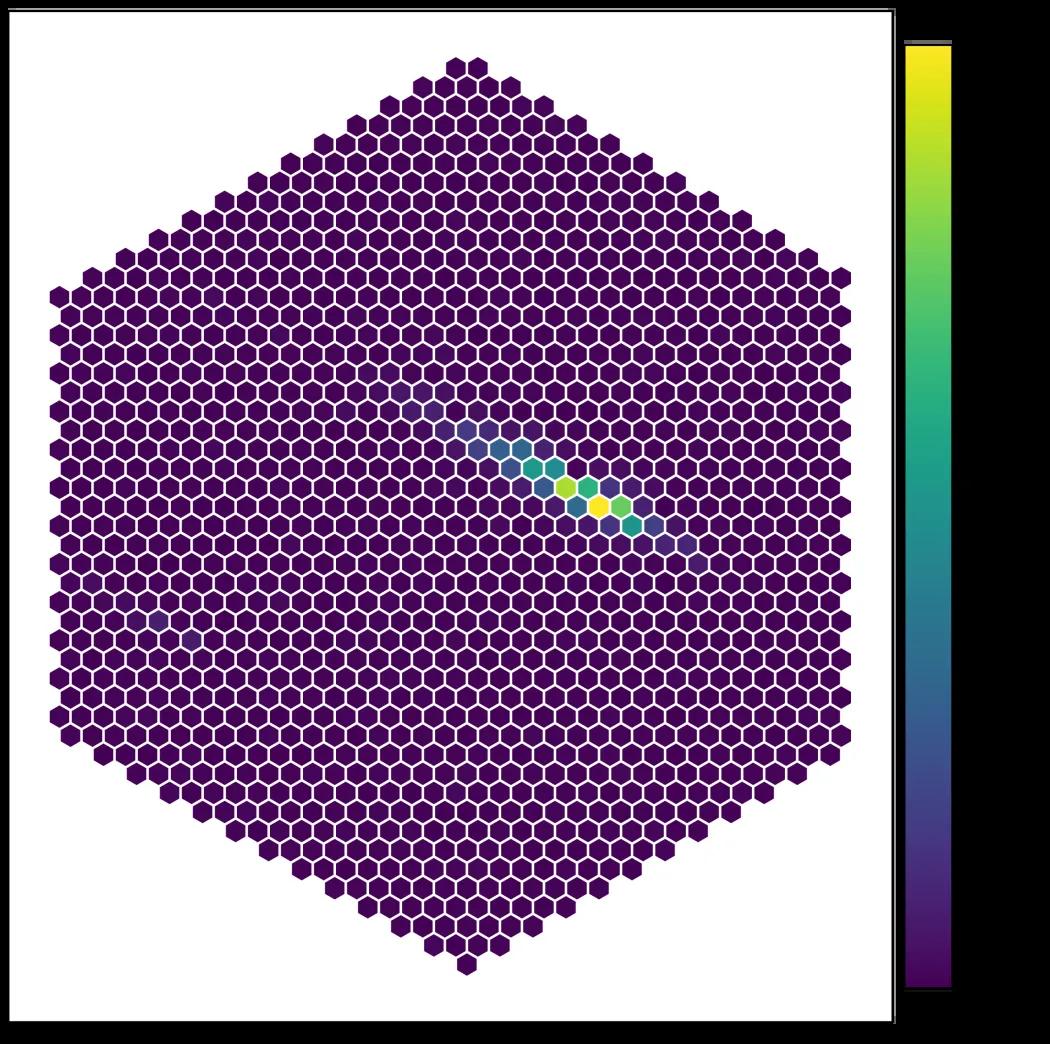On Wednesday, February 23, 2022, the Cherenkov telescope SST-1M recorded its first events initiated by high-energy particles (of hadronic origin or originating from gamma-rays). Two telescopes are gradually being built at the Ondřejov Observatory since 2021. Among the key institutions involved in those activities are Université de Genève, Instytut Fizyki Jądrowej PAN, Krakow and the Czech Academy of Sciences. In connection with the recent events, the consortium greatly appreciates the work of Ukrainian colleagues in putting both Cherenkov telescopes into operation.
The aim of this telescope and the second one that will be equipped in about a month with a second camera is to detect gamma-rays from cosmic high energy sources in our Galaxy or in the extragalactic space.
As the mechanical systems and the camera of the telescope were adjusted for operation between 8 and 11 pm, data have been recorded in several celestial directions, including the surroundings of the Crab Nebula. The data include not only images of entire extensive air showers of many secondary particles created during the interactions of the primary particles in the atmosphere, but also records of individual particles in the showers, in particular muons, seen as “muon rings” on the camera. Muons are the clear signature of hadronic origin.
These telescopes were originally conceived as prototypes for the entire class of small telescopes for the Cherenkov Telescope Array (CTA) project. The two prototypes were first assembled in Kraków, Poland, where they however always operated only as individual units. Later on the telescopes were transported to Ondřejov, where they will take data under much better sky conditions.
The SST-1M Consortium is currently looking forward to the installation of the Cherenkov camera on the second telescope in Ondřejov, so that the observations in the coincidence (or stereoscopic) mode can begin. The camera has been mechanically conceived and developed at the University of Geneva and it is equipped with innovative silicon sensors. Its digitizing and trigger electronics was developed at the Krakow University. The camera fully digitizes the photon signals of all pixels despite their short duration of few nanoseconds and the high rate of backgrounds due to night sky background.
The goal of the installation is to gradually optimize the properties of the whole system, observe sources of cosmic gamma rays with energies around 1 TeV and then eventually deploy the well-tested telescopes to other observing sites at higher altitudes above the sea level within further international projects.
The SST-1M team is composed of members from multiple institutions in the Czech Republic, Switzerland, Poland and Ukraine. It has been led by the University of Geneva. The responsibility for the optical system of the telescope lies with the Czech Partner (Joint Laboratory of Optics of the Institute of Physics CAS and Palacky University Olomouc). The Astronomical Institute CAS provides support for the construction and operation of the telescopes.
The Polish partners have designed and built the mount of the telescope, its control system and the fully digital electronics for the camera. They have also contributed significant funds towards the construction of the necessary infrastructure in Ondřejov. The Swiss partners have designed and built the mechanical parts of the camera and a unique detection system of Cherenkov lights based on a new technology using silicon photomultipliers (SiPM) only recently deployed in gamma-ray astronomy.
The participation of the Czech Republic in the CTA project, for which the prototypes were created, is funded by MEYS CR within the Large Infrastructures projects LM2015046, LM2018105 and the project OP VVV CZ.02.1.01/0.0/0.0/16_013/0001403. A further project of MEYS CR LTT17006 supports the ongoing scientific analysis of the data from the prototypes. The launch and operation of the telescopes in Ondřejov are also supported by the Czech Academy of Sciences within the project “Universe for Humanity” within the “Strategy AV21” framework.



